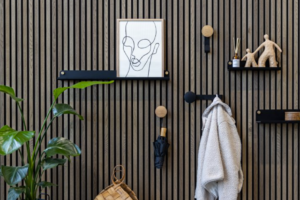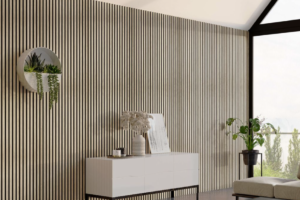How do you dress a Window? Amateurs beware, this is one area where even the most intrepid do-it-yourselfers may suggest you to find this
professional for help. Windows are always a focal point, so it’s worth it to take trouble to finish them well — it can make or break your room.

I cannot tell you how many people come into my shop and ask for advice and pricing on window treatments and they tell me they have “standard” windows. Well, there is no generic answer. When it comes to windows, there are no “standard” windows and there are no standard answers. There are just too many factors that go into determining a suitable treatment: the style of the home and style of the windows, the existing furnishings, the location of the windows, the need for privacy, light control — and I haven’t even touched on the size of the budget!
Light
When choosing window blinds, most people’s first concern (especially men) is that they don’t cut off any light or view from the window. It is possible to create a strictly decorative treatment that does not compromise the view or obstruct any light, however, there are many reasons why it is preferable to cover windows with blinds like these blinds for triangular windows. For one thing it is a good idea to filter the light in order to protect furniture and floors. Then there’s that expanse of west-facing windows that is so lovely in the morning, but by late afternoon is transmitting an uncomfortable blinding light that cries out for translucent shades allowing you to enjoy the view without the glare.
Some window coverings are used to enhance the quality of light: blinds from Newblinds.co.uk can create dramatic angled light effects, sheer fabrics soften the quality of light, and colored fabrics can be used to alter color — red and orange tones will warm up the atmosphere and blue will cool it. Lace or cutwork fabrics will cast interesting and ever-changing shadow patterns as the sun plots its course over the day.
Privacy
Of course privacy is one of the obvious reasons to cover windows — without a covering at night, all the neighbors will know exactly what is going on in your house in the evening and from the inside you are faced with cold black holes. One of my fondest childhood memories is that of my best friend’s mother drawing the drapes closed every evening at sunset; I loved to participate in the ritual and experience the cozy sense of protection while the outside world was closed off until the morning when the ritual was reversed and you opened the drapes to greet the new day.
Draw draperies are currently not in fashion but there are many other and more flexible options to achieve privacy. A window blind installation, for example, is a great way to decorate your window while providing your room its much needed privacy. Another great option to consider is accordion shutters.
Respect the Architecture
I don’t consider myself a slave to historicism but I find that it generally works best to respect the style of the house and the window. If you have an antique colonial home, I doubt that vertical blinds will look well on any of your windows. By the same token, if your home is contemporary and features large walls of glass — traditional layered window coverings are going to look peculiar. I once saw a “post-war” (as they call it in New York City) apartment all done up in festoons with crisp jabots and neatly pleated panels. Although it was executed to perfection and designed by an accomplished decorator, the juxtaposition of the modern windows sans molding with the very fancy curtains was jarring.
If you are lucky enough to have a house with high ceilings and big beautiful windows — you have exciting potential, but you must be bold. Sumptuous fabric and big drapery hardware is called for here. If you choose a patterned fabric it must be grand in scale; a small pattern will only be effective in a large-scale setting if accompanied by prominent trimmings such as a bullion fringe or a substantial banding.
Eight-foot ceilings with undistinguished windows look silly with formal layered draperies but simple panels mounted at or close to the ceiling will serve to heighten the space. In casual settings simple valances or Roman shades are often best. A good friend of mine has an historic stone house in Pennsylvania with deep set small windows — red Roman valances pulled up tight to the top of the frame were all he needed to draw attention to the charm of the windows and to brighten up the space.
Scale and proportion
Poorly proportioned windows can be helped tremendously by a good window treatment: to make a small window appear taller, use the old decorating trick of hanging a shade on the wall above the window, then add a valance or side panels to complete the illusion.
Asymmetrical window placement can often be compensated for with judicious placement of curtains. While the height of the windows may vary; the draperies or valances can be mounted at the same height to create needed symmetry. Other awkward examples of window placement can be ameliorated by a good window treatment. You can also use a guide in measuring for blinds if you’re planning to install one for your asymmetrical window.
Fabrics
Choosing a fabric for your window can be an overwhelming proposition just because there are so many beautiful choices. Do you want a luscious silk that catches light in crinkly folds? A handsome glazed chintz? Rich velvet drapes for a library? Printed linen? Style preferences aside, be aware of how the fabric “drapes.” A stiff fabric can make stylish panels or can be used for cornice boards but it probably will look forced in a swag. On the other hand, a fabric that is very soft may need to be lined and interlined to give it more body or it will look limp in swags and panels.
Sheer fabrics, once the background of a traditional treatment, now often command center stage. They are available in any color; some are printed, some have beading and unique woven elements, and they are made in all kinds of fibers —cotton, silk, synthetics, linen, wool, metallics and more.
Trends
While traditional drapery treatments will always be appropriate in elegant classic-style homes, the current fashion favors simpler window coverings. Tightly executed swags and tails have given way to a relaxed unstructured version. Kingston valances used to be everywhere (a valance that alternates inverted “bells” with scallops) but I hardly see them anymore — a simple box pleated valance is more popular. Roman shades, mounted either inside or outside the window frame, are a staple of the window wardrobe, and top pleated panels have taken the lead over the fancier goblet pleated variety.
Make informed choices on your window treatments. Also, make sure to hire only experienced Window Replacement DC – Springfield company if you want to have your windows replaced. They are an expensive investment and likely to be with you for many years!
Barbara Sternau is an Interior Designer with offices at
37 Main St., Tarrytown, NY
bsternau@optonline.net







